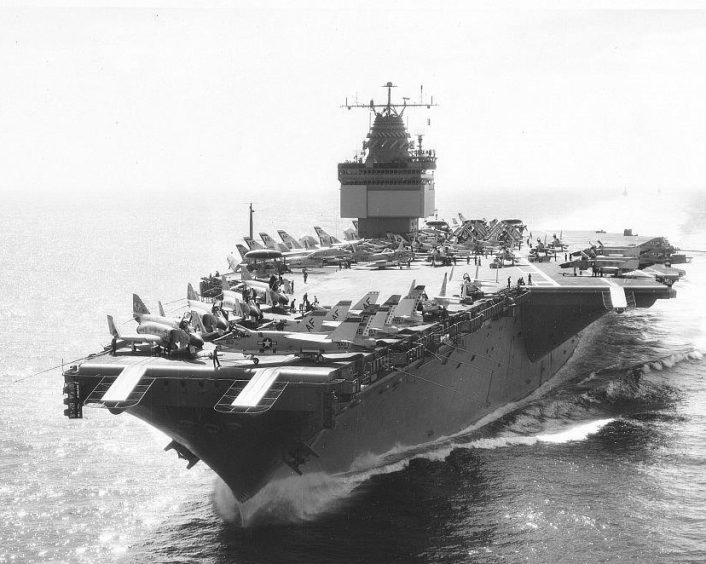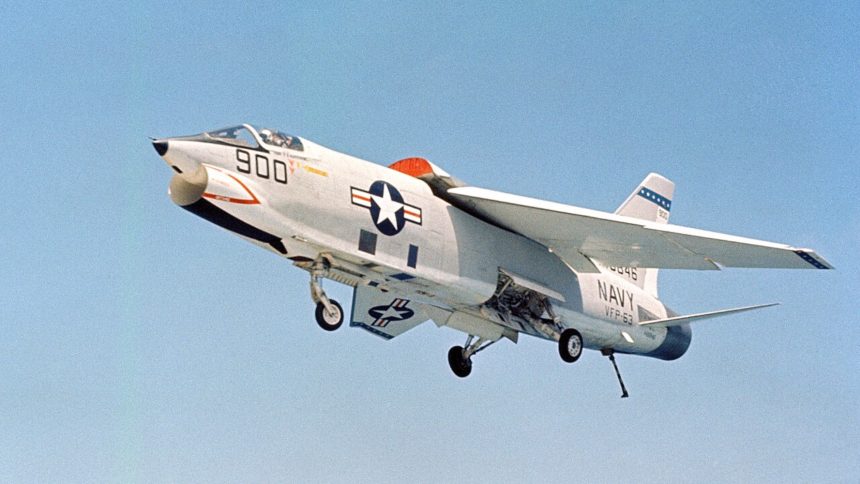U.S. Navy and Marine Corps RF-8A Crusaders played an important, often forgotten, high-speed low-level and dangerous recon role during a time the world was on the brink.
Backyard Threat
On Oct. 14, 1962, United States Air Force Major Richard Heyser flew a Lockheed U-2 belonging to the Central Intelligence Agency (CIA) from Edwards Air Force Base (AFB), California, to Fidel Castro’s Cuba for a high-altitude photo-reconnaissance mission. The early morning hour of 7:30 am had been chosen in order to cause objects on the ground to create tell-tale shadows, allowing analysts to determine what was captured on film more easily. Heyser made his run at over 70,000 feet and then, after snapping 928 photos, turned towards Florida where he landed.
The film was removed from the U-2 and immediately processed. The resulting pictures were soon in the hands of CIA headquarters. What was discovered on those photographs would put the United States and the Soviet Union on the brink of nuclear war, causing a dangerous international crisis that lasted 13 days, known as the Cuban Missile Crisis. At no time in history had the Cold War come so close to World War Three.
The photos Heyser had taken revealed Soviet SS-4 medium-range ballistic missile erector launcher equipment, trailers, tents and various signs of construction and support. U-2 flights also discovered Soviet SS-5 intermediate-range ballistic missiles and Ilyushin IL-28 “Beagle” medium bombers in Cuba. An earlier United States Navy reconnaissance flight on Sept. 28 had photographed the Soviet ship Kasimov with crates believed to be carrying IL-28’s. All of these weapons were capable of striking at least parts of the United States mainland. President John F. Kennedy was notified of the Soviet buildup threat on Cuba early on Oct. 16.
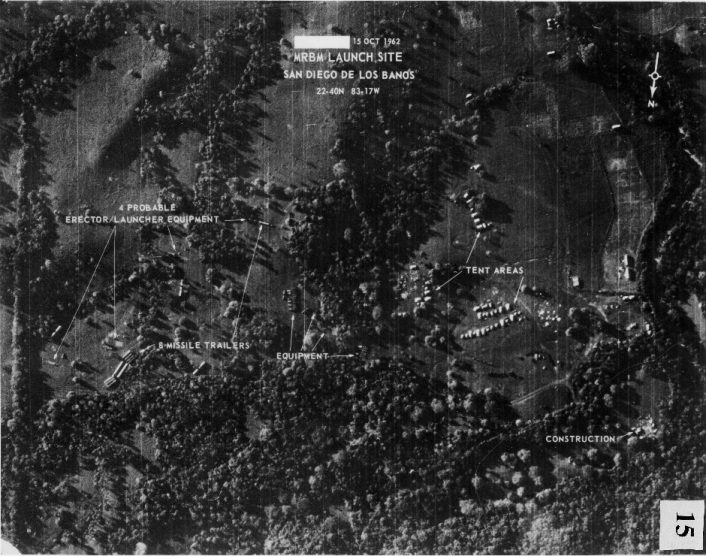
Escalating Tensions
The U-2 flights had given President Kennedy evidence of the Soviet build-up on Cuba, but he needed more detailed photos to provide proof. Those detailed photos would require low-altitude reconnaissance flights, and the Navy had the perfect aircraft for the job, the Vought RF-8A Crusader. Photos taken by Navy RF-8A’s clearly showed the Soviet weapons being constructed and in place in Cuba.
Kennedy took the message public on television on Oct. 22, announcing a naval quarantine of Cuba and that any missile attacks on the United States or the western hemisphere from Cuba would be considered an attack from the Soviet Union on America that would trigger a full retaliatory strike on the Soviet Union. Soviet premier Nikita Khrushchev responded that the “blockade” was an act of aggression and that Soviet ships would continue to proceed to Cuba.
The U.S. Strategic Air Command (SAC) went to DEFCON 2 for the first time in history, one step short of general war, and at least a third of the U.S. B-52 bomber force was placed on airborne alert with the rest of the bomber force ready to launch in 15 minutes. The North American Air Defense Command (NORAD) moved interceptors and anti-aircraft batteries to the southeastern U.S. Tensions were further escalated when a U-2 was shot down over Cuba, and pilot Maj. Rudolf Anderson Jr. was killed on Oct. 27.
The RF-8A and “Blue Moon”
Originally designated the Vought F8U-1P and later re-designated the RF-8A, the photo-reconnaissance Crusader made its initial flight on Dec. 17, 1956. Similar to the basic F-8 fighter version of the aircraft, modifications included the lower fuselage area forward of the main landing gear wells being adapted for the installation of cameras in place of guns. The bottom and sides of the fuselage were flattened and camera windows added. The nose of the aircraft had an attack camera installed, and four more cameras were placed aft of the pilot on both sides, with windows on the sides of the aircraft and the bottom, some cameras could be rotated from vertical to other angles.
The aircraft could take pictures flying at high speeds from 50,000 ft down to tree-top level, day or night, with photo-flash cartridges carried internally for nocturnal operations. The camera windows often needed cleaning as the Crusader was subject to hydraulic leaks. Different cameras could be installed depending on the mission requirements. Other differences from the fighter version included the addition of a hump from behind the canopy to the center section of the wing, and the refueling probe retracted into the fuselage itself, whereas the fighter version was housed in a blister on the fuselage when retracted.
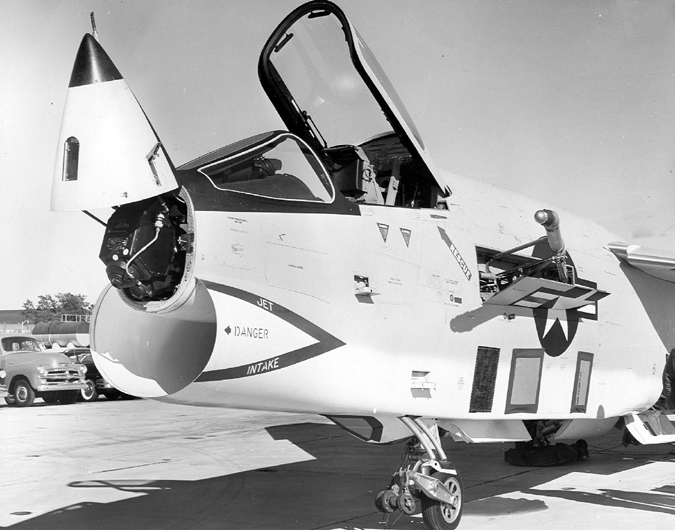
The RF-8A had a length of 54 ft 5.75 in and a wingspan of 35 ft 8 in. With a range of 1,740 nautical miles it had a take-off weight of 27,882 lb, while ceiling was 41,600 ft. Power came from a single Pratt & Whitney J57-P-4 engine producing 16,000 lb of thrust with afterburner. Reconnaissance versions of the Crusader were unarmed.
On Oct. 23, RF-8A Crusaders from Navy reconnaissance squadron VFP-62 (Navy Light Photographic Squadron) began overflights of Cuba under the codename of “Blue Moon”. Operating in pairs, twice a day the aircraft would leave Naval Air Station (NAS) Key West, Florida, and fly low level high-speed photo-reconnaissance missions over Cuba. Flying at 480 knots (552 mph) the pilots would shoot from an altitude of 200 ft to 1000 ft above their targets, engage the cameras and once the overflight was complete, descend back down to 200 ft and escape the area.
The aircraft would land at NAS Jacksonville to have the film offloaded. The film was soon processed and rushed to CIA and Pentagon experts. Four United States Marine pilots from VMCJ-2 (Marine Corps Composite Reconnaissance Squadron) were also assigned to fly RF-8A missions, joining the twelve Navy pilots, and integrated into VFP-62’s Blue Moon schedule. The Marines flew both Marine Corps RF-8As as well as those belonging to the Navy.
No RF-8As were lost to enemy fire during the operation in spite of encountering anti-aircraft fire at times. Mocking Cuba’s dictator, Fidel Castro, who refused to eat chicken while visiting New York City unless it was killed and cooked in front of him out of fear of being poisoned, RF-8A aircraft would receive a stenciled dead chicken after each overflight serving as a scoreboard.
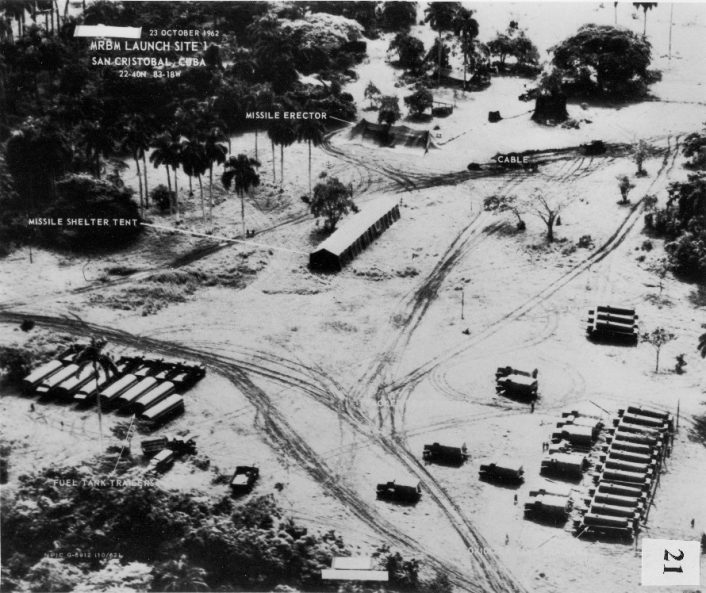
Stepping Back from the Brink
Low-level photographs obtained by the pilots of the RF-8A helped solidify President Kennedy’s claims of the Soviet build-up in Cuba, clearly identifying the Soviet weapons as well as construction sites. Diplomatic efforts continued as the United States made plans to attack Cuba when a series of back-and-forth messages between Kennedy and Khrushchev resulted in a dramatic turn of events. While choosing to ignore the second of a pair of last-minute messages from Khrushchev and answering the first, Kennedy proposed a plan for removal of the Soviet weapons under the supervision of the United Nations in return for assurances the United States would not attack Cuba.
The second letter from Khrushchev had demanded the removal of American Jupiter missiles from Turkey, which were one of his publicly stated reasons for placing missiles in Cuba. The Jupiter was fast becoming obsolete and plans were to remove them in the near future, however ignoring the second letter demanding their removal prevented the issue from becoming a part of the final public resolution of the crisis. On Oct. 28, Khrushchev acquiesced and agreed to remove the missiles from Cuba.
The naval quarantine would continue however until the United States was satisfied the missiles as well as the IL-28 bombers were removed. Flights by RF-8As would continue, monitoring the removal of the weapons and the ships carrying them back to the Soviet Union. A pair of night missions would also be flown in November, one on Nov. 5 and the second on the Nov. 17, from the carrier deck of the U.S.S. Enterprise. These missions flew over Guantanamo Naval Base in an attempt to detect any Cuban activity around the base after U.S. Marines reported hearing unknown noises outside the perimeter. The aircraft, 146545, flown by Lt. Jim Curry, is now restored and on display at Battleship Memorial Park near Mobile, Alabama.
The overflights lasted for about six weeks with a total of 160,000 negatives returned from the missions. All twelve Navy and all four Marine pilots were awarded the Distinguished Flying Cross, and VFP-62 was awarded the Navy Unit Commendation. The naval quarantine was lifted Nov. 20, 1962. In April of 1963, the Jupiter missiles were quietly removed from Turkey.
